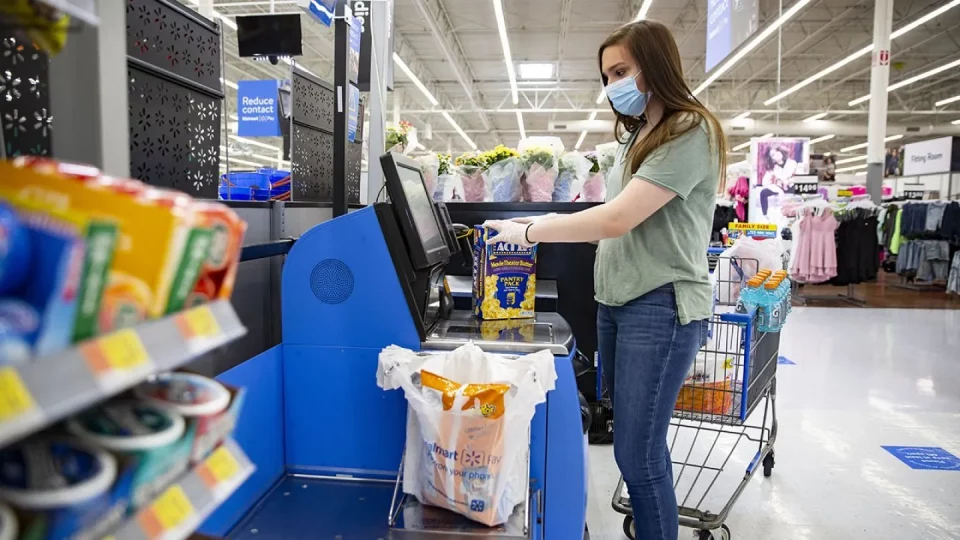Walmart, the United States’ largest supermarket chain, has launched a pilot programme of checkout-free stores using smart technology to streamline the shopping experience. Announced this week, the initiative represents a significant leap in retail innovation, aiming to reduce wait times, improve convenience, and position Walmart as a leader in the next generation of grocery shopping.
The Concept of Checkout-Free Shopping
Checkout-free stores leverage a combination of sensors, cameras, RFID tags, and artificial intelligence to allow customers to shop without traditional checkout lines. Shoppers simply pick up items, and the technology automatically tallies their purchases and charges their accounts via a linked app or payment method.
Key features of Walmart’s checkout-free stores include:
-
Automatic Item Detection – Smart shelves and sensors track items taken or returned.
-
Seamless Payment – Charges are processed automatically, eliminating the need for physical checkout.
-
Real-Time Inventory Tracking – Stores can monitor stock levels continuously for efficient replenishment.
-
Enhanced Customer Experience – Reduced wait times and frictionless shopping make for a smoother visit.
By combining these technologies, Walmart creates a shopping environment that is faster, more efficient, and more convenient for customers.
Consumer Benefits
Checkout-free stores offer several advantages for shoppers:
-
Time Savings – No queues, faster in-and-out shopping.
-
Reduced Human Contact – Appealing for health-conscious or time-constrained consumers.
-
Accurate Billing – Automated systems reduce errors associated with traditional checkout processes.
-
Enhanced Shopping Experience – Technology enables personalised recommendations and promotional alerts during shopping.
This convenience-driven model responds to changing consumer expectations, particularly among younger and tech-savvy demographics.
Technology and Implementation
Walmart’s smart store technology integrates hardware and software systems to manage operations efficiently:
-
AI-Powered Cameras and Sensors – Detect product movements and track customer activity.
-
RFID-Tagged Products – Ensure accurate inventory tracking and automated billing.
-
Mobile App Integration – Provides customers with account management, purchase history, and digital receipts.
-
Data Analytics – Insights from customer behaviour guide stocking, marketing, and store layout decisions.
This integration allows Walmart to enhance efficiency, reduce human error, and optimise the shopping environment continuously.
Operational Advantages
For Walmart, checkout-free stores provide significant operational benefits:
-
Reduced Labour Pressure – Staff can focus on customer service, stock management, and store maintenance.
-
Optimised Inventory Management – Real-time tracking minimises out-of-stock incidents.
-
Enhanced Operational Efficiency – Automated billing and replenishment improve store performance metrics.
-
Data-Driven Insights – Understanding shopping patterns enables targeted promotions and better product assortment.
The combination of automation and analytics strengthens Walmart’s competitive position in the grocery sector.
Market Context and Competition
The move aligns Walmart with global retail trends, following innovations pioneered by Amazon Go and other tech-forward grocers. Checkout-free technology offers differentiation in a competitive market where convenience, speed, and innovation are increasingly important.
Competitors are also exploring similar models, with chains in Europe, Asia, and North America piloting smart stores to enhance efficiency and meet evolving consumer expectations. Walmart’s initiative demonstrates how a large-scale retailer can implement technology at scale while maintaining operational efficiency.
Challenges and Considerations
Implementing checkout-free stores is not without challenges:
-
High Initial Investment – Costs for sensors, cameras, software, and RFID tagging can be significant.
-
Technical Reliability – Systems must function seamlessly to avoid billing errors or customer frustration.
-
Consumer Adaptation – Shoppers need to understand how to interact with new technology effectively.
-
Privacy Concerns – Ensuring secure handling of customer data and transactional information.
Walmart has invested in testing, customer education, and privacy safeguards to ensure a smooth rollout.
Future Prospects
Walmart plans to expand the pilot to additional stores based on feedback, performance metrics, and customer adoption rates. Potential enhancements include:
-
Full integration with online ordering and delivery
-
Personalized recommendations and promotions via mobile apps
-
Smart carts or wearable technology for in-store guidance
-
Expanded use of AI for inventory prediction and supply chain optimisation
These developments indicate Walmart’s long-term vision for a fully connected, technology-enabled retail ecosystem.
Conclusion
Walmart’s pilot of checkout-free stores represents a major step forward in the evolution of grocery retail. By combining AI, sensors, RFID technology, and mobile integration, the chain creates a fast, convenient, and efficient shopping experience. The initiative highlights the potential of technology to transform traditional supermarkets while enhancing operational performance and customer satisfaction. As consumer expectations continue to evolve, Walmart’s approach sets a benchmark for innovation, demonstrating how smart technology can redefine grocery shopping for the future.

